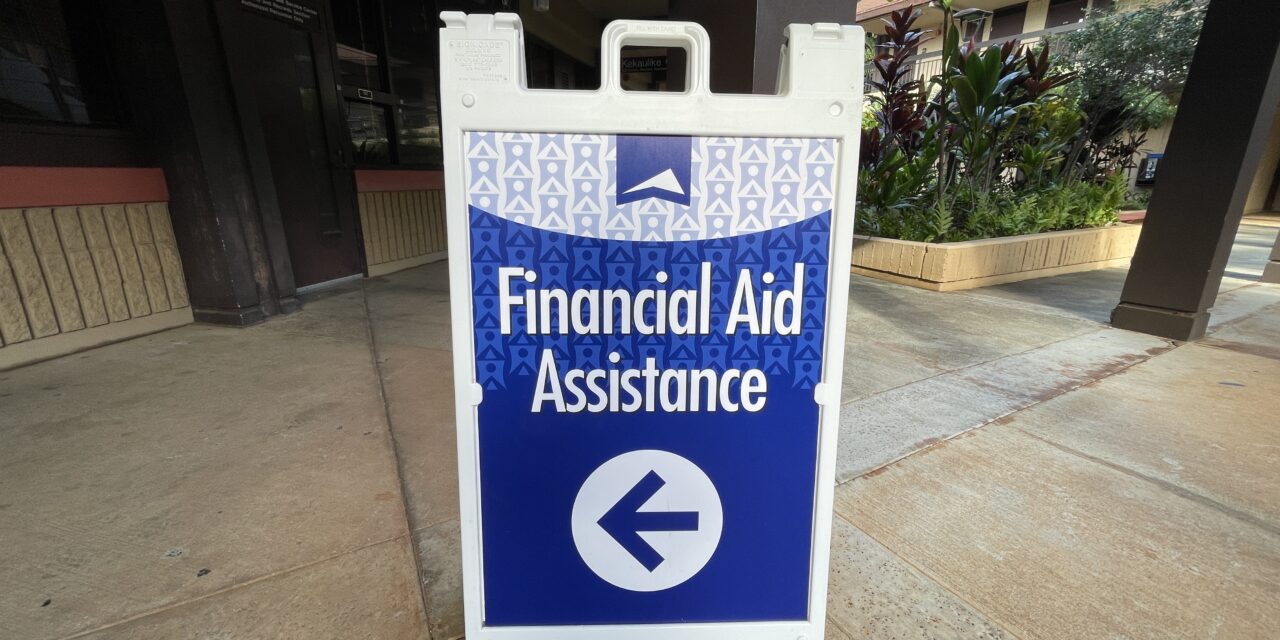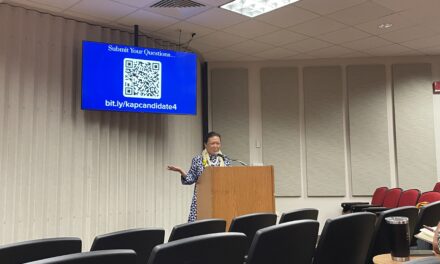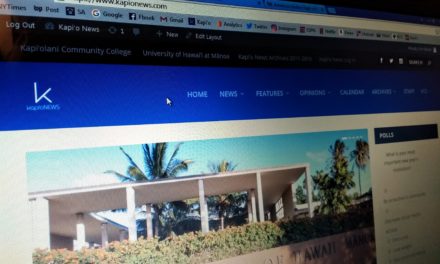The federal government is introducing a simpler FAFSA form for the 2024-25 school year. The new form will have fewer questions and create more opportunities for students to receive aid. (Photo by Cameron Enomoto)
By Cameron Enomoto | Staff Writer
The Free Application for Federal Student Aid (FAFSA) is creating a new look for the 2024-25 form. The FAFSA, which is usually available at the beginning of October, will be open by December 31, 2023.
“The biggest changes that are happening are for the 24-25 school year and beyond,” said Jennifer Bradley, the financial aid manager at KCC. “Currently we look at the estimated family contribution (EFC), though now we’re going to look at the student aid index (SAI). The reason why there are two different names is because it’s being calculated differently. After this [updated FAFSA form] is released, because there are so many changes, it should go back to October 1.”
The FAFSA form that has been used in previous years provided students with an EFC, which is used to determine if a student is eligible for federal financial aid and is based on the information that is entered in the FAFSA form. Items considered when calculating the EFC include the income from a student’s family, both taxed and untaxed, assets, and benefits.
For the updated FAFSA form, the SAI will be used to determine a student’s federal aid eligibility. Colleges and career schools will be able to use the SAI to determine how much federal aid a student would receive if they were to attend the school. Unlike the EFC, the lowest number for the SAI is -1500. For the EFC, the lowest number was 0. A student’s SAI will be compared to the cost of attendance at their chosen school, which determines their Pell Grant eligibility. Pell Grants do not need to be repaid and are typically awarded to undergraduate students who demonstrate financial need.
“According to the federal government, we expect more students to be eligible for aid,” Bradley said. “There are also fewer questions and the wording of the questions differs from the old FAFSA form, which makes it easier.”
Similar to past FAFSA forms, students and their parents will be required to create an FSA ID. An FSA ID is used to log in to the U.S. Department of Education online systems and is necessary to complete the FAFSA. However, the new form will have to be completed in different portions instead of one form.
“When you’re completing the FAFSA, you’re going to fill out your part and then you will be prompted to invite your parent to complete their portion,” Bradley said. “Your parent will get an email and they can accept your invitation and complete their portion. You can’t do the form in one single session anymore. At a minimum, it’s going to be two sessions, you and your parent.”
Additionally, changes to the form have created an easier method for tax information to be accessed and uploaded.
“The student and the parent will have to agree that both parties approve to do the federal tax transfer,” Bradley said. “That agreement goes in and it tells FAFSA if you filed your taxes and it will bring that information right into the FAFSA form so you don’t have to put it in manually. If you do not agree, you do not qualify for federal financial aid.”
To prepare to fill out the FAFSA form, Bradley encourages students and their parents to create an FSA ID and have their tax returns from 2022. Having this information available will speed up the application process and ensure that all information inputted is correct. For more information on the FAFSA simplification, visit the KCC Financial Aid website.






